Four years after displaying the first edition of his ongoing project on the history of the arts in the Arab world, Walid Raad presents Scratching On Things I Could Disavow, now expanded from its first chapter on post-war Beirut to explore other forms, gestures, institutions and practices from across Middle East. In 2008, Walid Raad initiated this project about the history of contemporary and modern art in the Arab world. The project was initially motivated by the museum building boom taking place in the Gulf, and by his continued engagement with the works of the artist and writer Jalal Toufic.

Scratching on Things I Could Disavow explores the ideological, economic, political, but most importantly, the aesthetic dimensions of this recent fascination with the arts in the Arab world. In his works, Raad also leans on Jalal Toufic’s concept of “the withdrawal of tradition past a surpassing disaster” and asks how culture and tradition in the Arab world may have been affected, materially and immaterially by the various wars that have been waged there by native and external powers.
In 2007, I initiated an art project about the history of art in the Arab world. My project leans on the recent emergence of large new infrastructures for the visual arts in the Arab world. These developments, when viewed alongside the geo-political, economic, social and military conflicts that consumed the region in the past few decades, shape a rich yet thorny ground for creative work. The artworks and stories I present with this project were shaped by encounters on this ground with individuals, institutions, economies, concepts and forms.
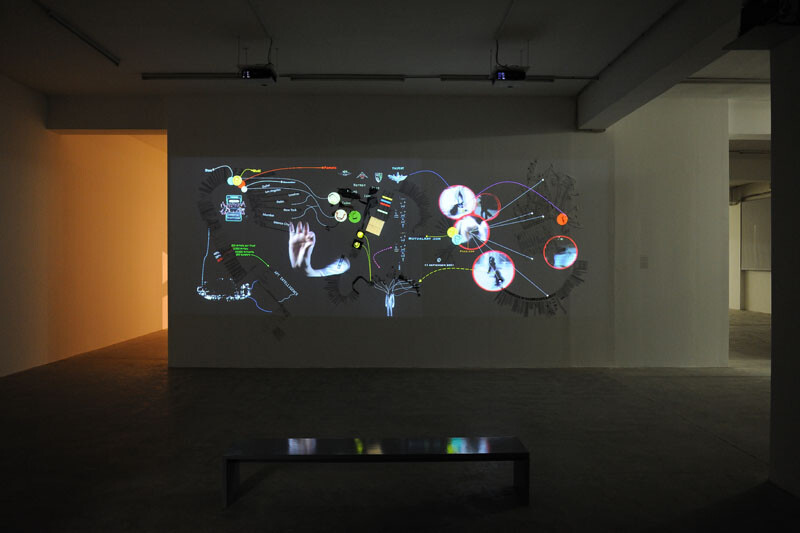

video installation with 2 beamer, strips of paper and a schema , sound (voice explaining the work), film still, Ed.5 + 1 AP
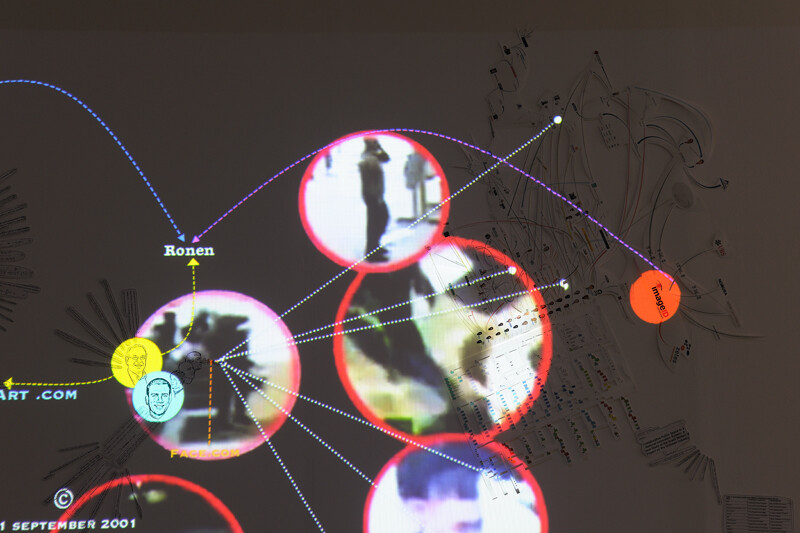
video installation with 2 beamer, strips of paper and a schema , sound (voice explaining the work), Ed. 5 + 1 AP
The show includes sculptures, videos, photographs and stories. Most were recently on display in Documenta 13 in Kassel. Others, such as Preface to the Seventh Edition are exhibited here for the first time. At one end of the gallery, Raad presents large-scale sculptures tackling architectural motifs relevant to the newly constructed museums in the Gulf. In other spaces Raad show photographs of what appears to be abstracted forms and colors. The show also includes a video installation on the Artist Pension Trust (APT), which unravels the complexities behind this investment fund for artists. Raad’s stories, available as wall-texts in the gallery, recount his and other characters’ historical and imaginary encounters with forms, concepts, economies, and situations made available on the fertile but thorny ground of the visual arts in the Arab world.
Translator’s Introduction: Pension Arts in Dubai, 2011
In 2007, I was asked to join the Dubai branch of the Artist Pension Trust (APT). As a private company established in 2004 by a savvy entrepreneur and a risk management guru, APT’s aims are to select and pool artists and artworks into investment and pension funds. APT, which has thus far established eight regional funds, is owned by MutualArt, a British Virgin Islands-registered company whose assets include the website by the same name. To determine whether to join APT Dubai, I found myself asking who was funding APT and MutualArt, and why was APT launching a trust in the Middle East? This led me to look into technological innovations in the areas of statistics; risk management concepts in finance; art as an alternative asset class; culture as an engine of economic growth in the Arab world and elsewhere; text, data mining and face recognition algorithms; and the Israeli military and its links to the Israeli hi-tech sector. All of which led to the tableau presented here, which I regard as a stage set for an accompanying oral presentation in which I narrate my findings.
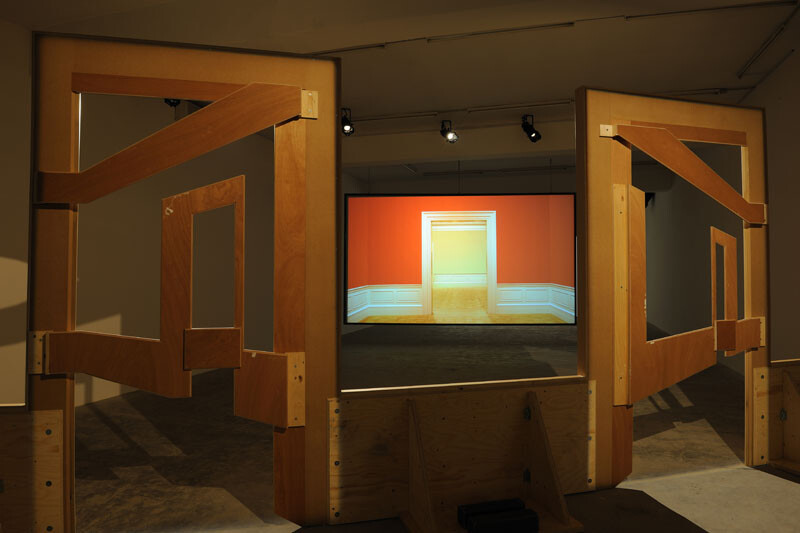


wood, paint, 250 × 500 × 20 cm, Ed. 3 + 1 AP
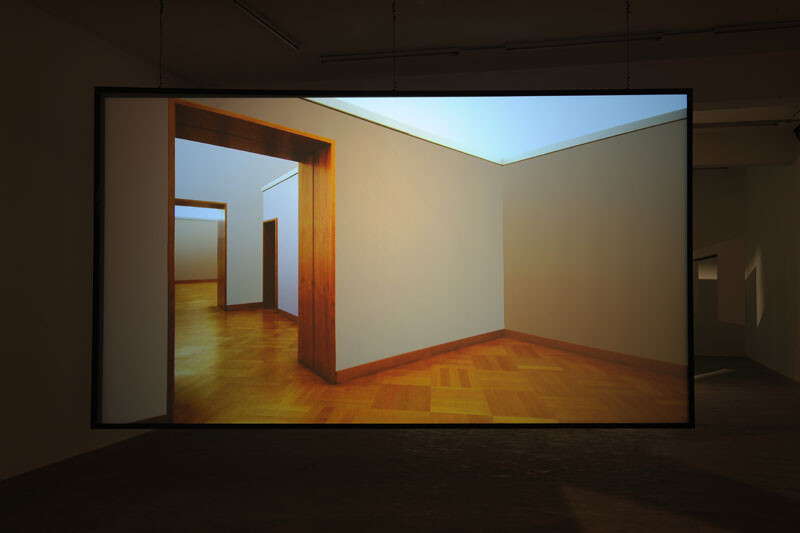
HD video, color, silent, 14:36 minutes, Ed. 5 + 7 AP
Walid Raad is an artist and an Associate Professor of Art in The Cooper Union (New York, USA). Raad’s works include The Atlas Group, a fifteen-year project between 1989 and 2004 about the contemporary history of Lebanon, and the ongoing projects Scratching on Things I Could Disavow and Sweet Talk: Commissions (Beirut). His books include The Truth Will Be Known When The Last Witness Is Dead, My Neck Is Thinner Than A Hair, Let’s Be Honest, The Weather Helped, and Scratching on Things I Could Disavow.
Views from Inner to Outer Compartment Act III Scene XV
At the opening of a new museum of modern and/ or contemporary art in an Arab city, a proud local resident rushes the entrance only to find that he is unable to proceed. Was it his casual wear at an event announced as a black-tie affair? No. Was it the thugs that shielded the ruling dynasty attending the event en masse to showcase their benevolence and refined sensibilities, pubescent-future-rulers in tow that prevent his access? No. He simply feels that were he to walk in, he will certainly ‘hit the floor.’ On the spot, he turns to face the rushing crowd and screams: ‘Stop. Don’t go in. Be careful.’ Within seconds, he is removed from the site, severely beaten and sent to a psychiatric facility. These events will take place sometime between 2014 and 2024. We will certainly read in newspapers the following day the headline: Demented Man Disturbs Opening - Claims World Is Flat.
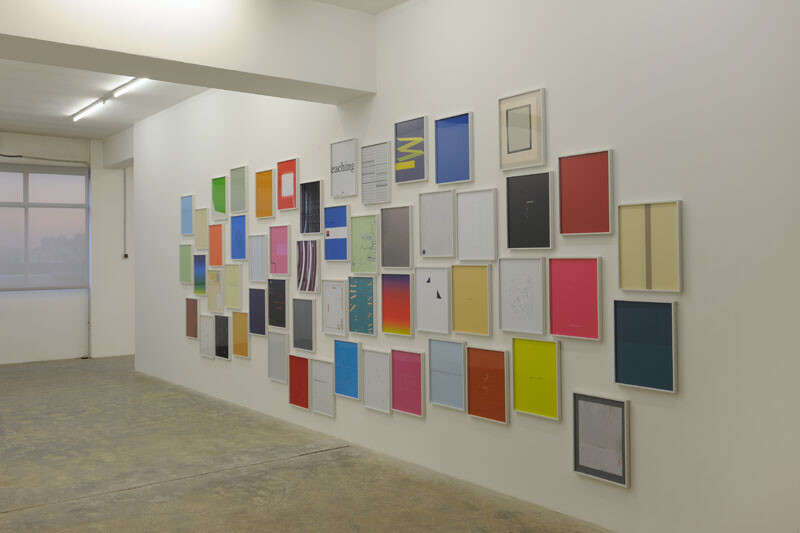

archival inkjet on archival paper framed, 164 × 132 cm, Ed. 5 + 1 AP
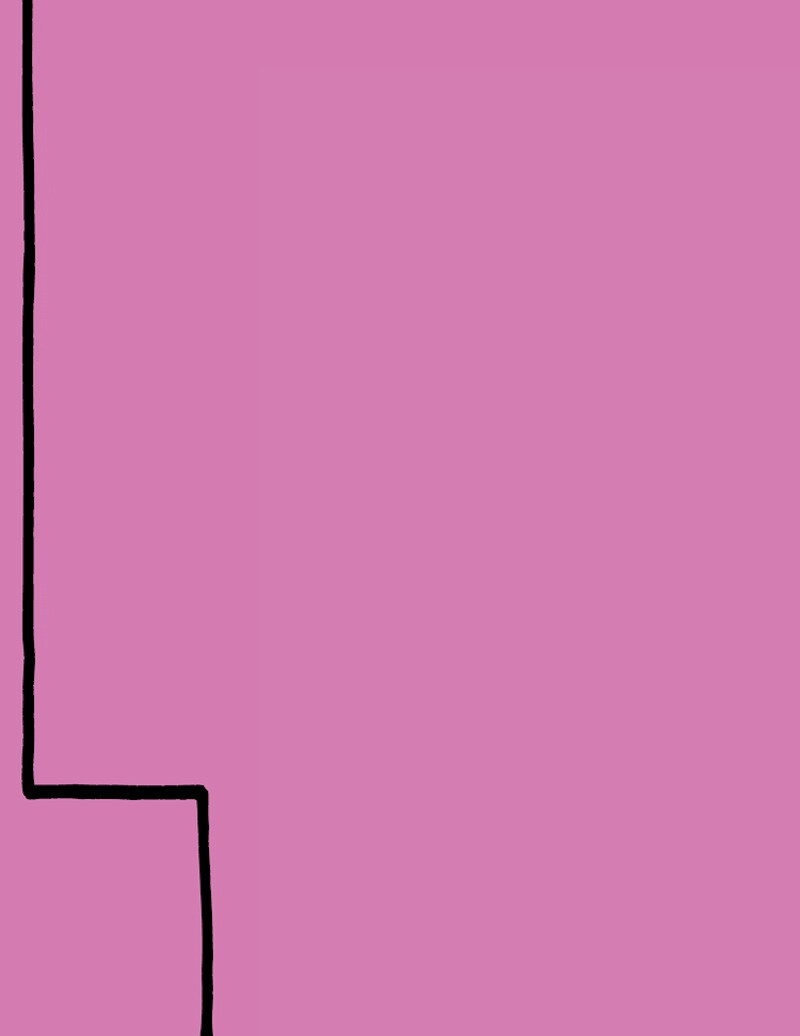
archival inkjet print, 164 × 132 cm, Ed. 5 + 1 AP
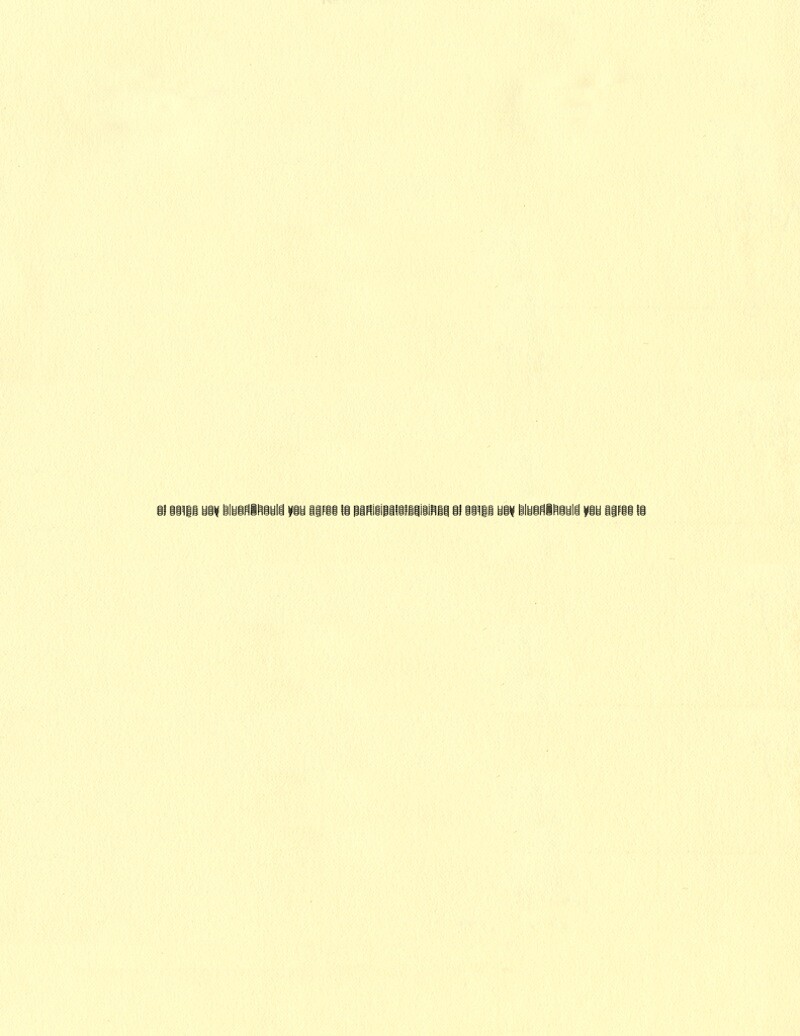
pigmented inkjet print, 164 cm, Ed. 5 + 2 A.P.
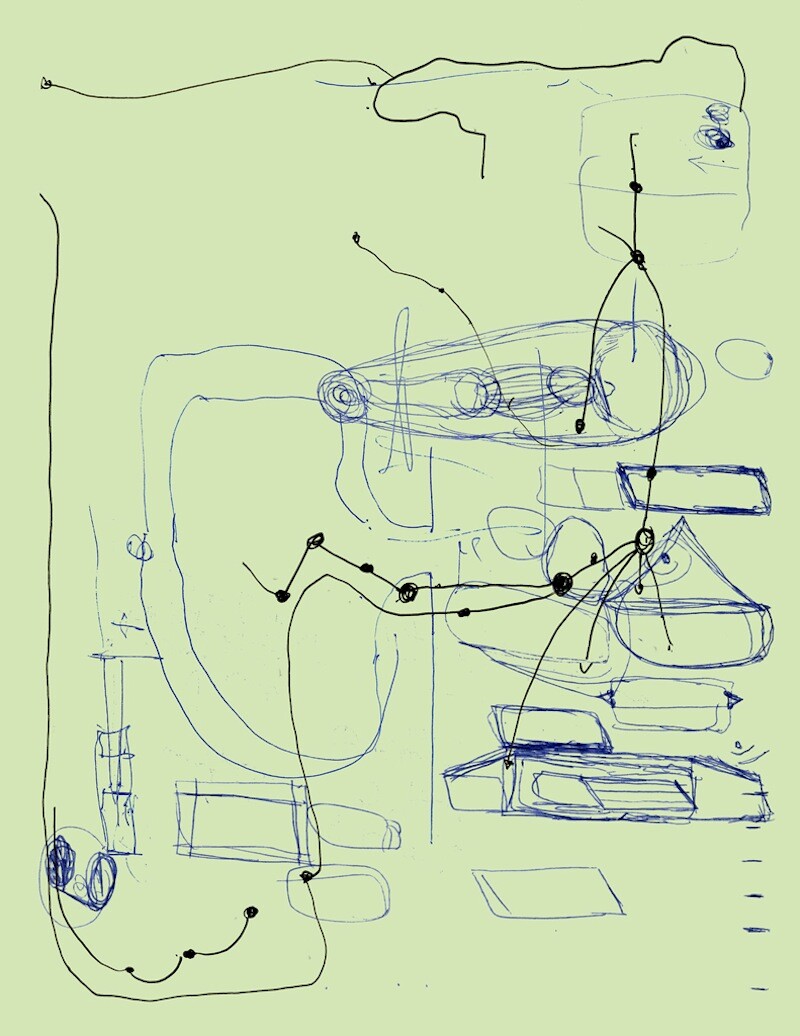
pigmented inkjet print, 164 × 131.5 cm, framed, Ed. 5 + 2 A.P.
Raad’s works have been shown in Documenta 11 and 13 (Kassel, Germany), Kunsthalle Zurich (Zurich, Switzerland), The Whitechapel Art Gallery (London, UK), Festival d’Automne (Paris, France), Kunsten Festival des Arts (Brussels, Belgium), The Venice Biennale (Venice, Italy), The Hamburger Bahnhof (Berlin, Germany), Homeworks (Beirut, Lebanon) and numerous other museums and venues in Europe, the Middle East, and America.
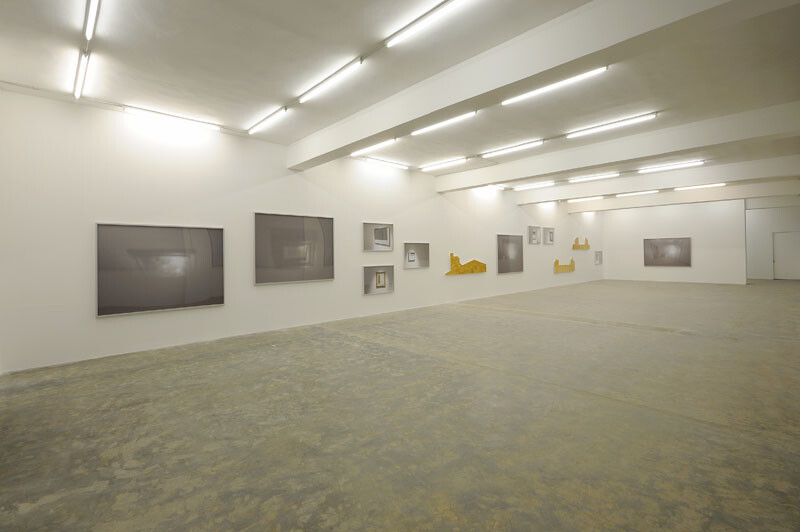

archival inkjet on archival paper, 212 × 160 cm, framed, Ed. 5 + 2 AP
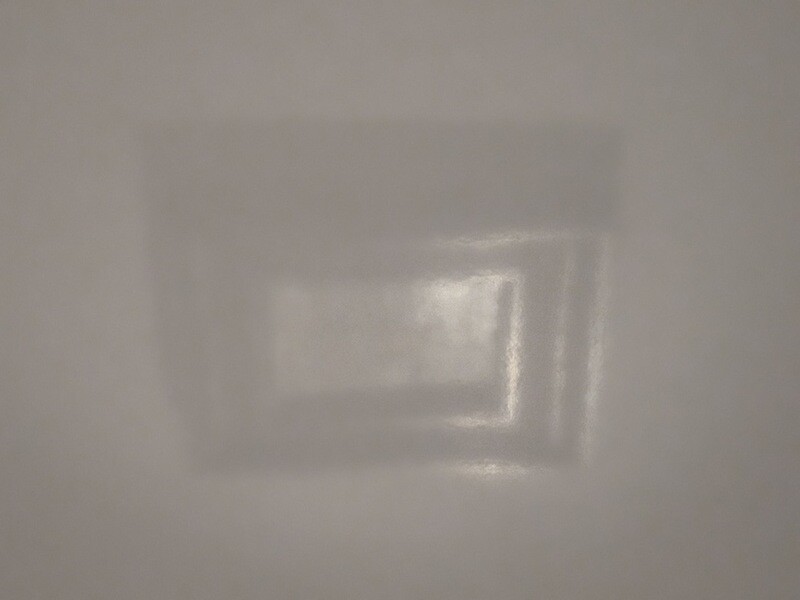
archival inkjet on archival paper, 212 × 160 cm, framed, Ed. 5 + 2 AP
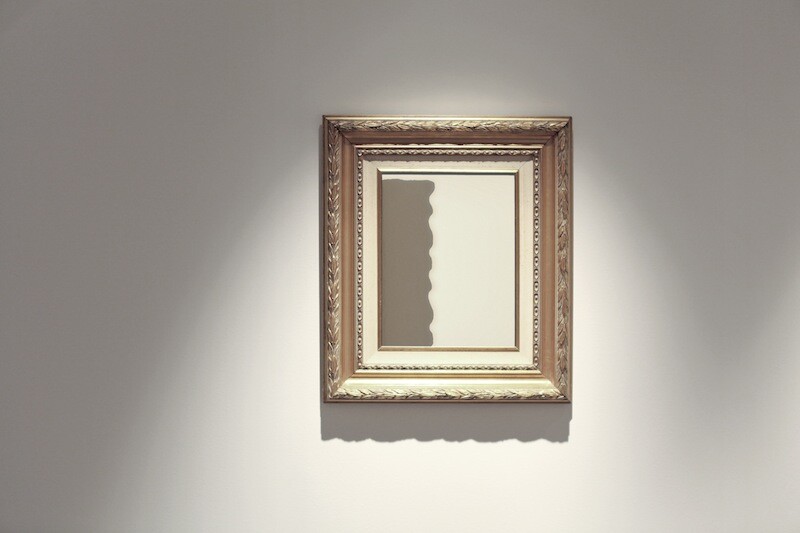
archival inkjet on archival paper mounted on aludibond, 73.7 × 110.5 cm, framed,Ed. 5 + 2 AP (1/5 & 2/5)
Raad is also the recipient of the Hasselblad Award (2011), a Guggenheim Fellowship (2009), the Alpert Award in Visual Arts (2007), the Deutsche Börse Photography Prize (2007), and the Camera Austria Award (2005).
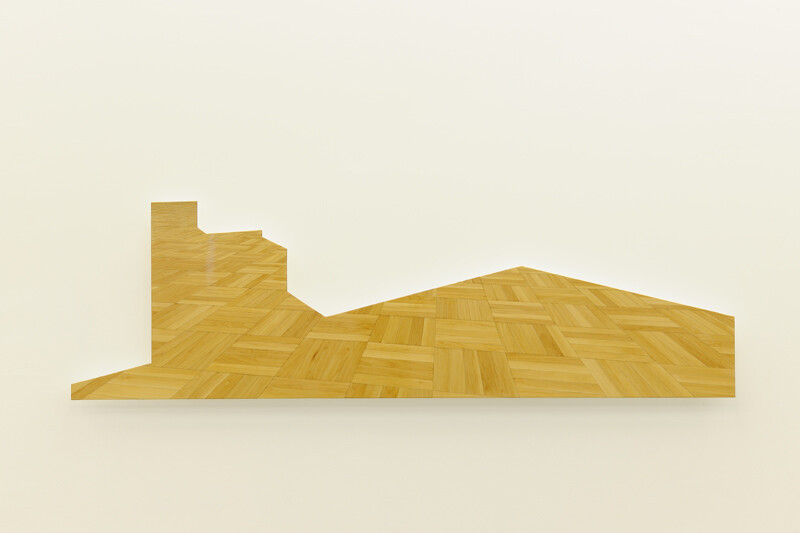
wood, metal, paint, 14 × 93 × 264 cm, Ed. 3 + 1 AP